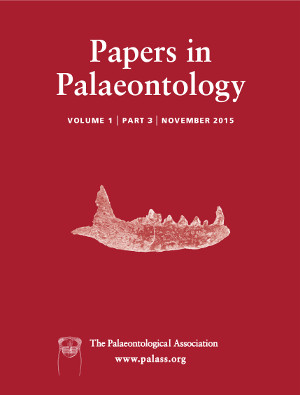Reg. Charity No. 1168330

The intraspecific gyrogonite polymorphism of two Late Palaeogene index species of the European charophyte biozonation scheme (Lychnothamnus vectensis (Groves, 1926) Soulié-Märsche, 1989, and Lychnothamnus pinguis (Grambast, 1958) Soulié-Märsche, 1989) was studied, based on their type populations from the Isle of Wight, UK. Both species display remarkable variation in the size, apical ornamentation and basal pore morphology of their calcified fructifications depending on the extent of calcification. This intrapopulational gyrogonite polymorphism is consistent with the general tendency observed in the only extant representative of the same genus, L. barbatus, which produces gyrogonites differing by up to 250 μm in height and 225 μm in width. On the other hand, the morphometric analysis performed on three populations of L. vectensis from different European basins (Hampshire, Paris and Ebro basins) indicates that the size variation of gyrogonites had a latitudinal polarity. The mean gyrogonite size of the type population from the Hampshire basin is about ~220 μm higher and ~125 μm wider than the mean value of the population from the Ebro basin, while intermediate gyrogonite sizes occur in the Paris basin. Furthermore, the morphometric characterization of the species L. pinguis supports its synonymy with the coeval species Lychnothamnus major (Grambast and Paul, 1965) Soulié-Märsche, 1989, the former having nomenclatural priority. The synonymy between these two biostratigraphic index species allows the merging of the two corresponding and successive biozones, L. pinguis and L. major. The new comprehensive Lychnothamnus pinguis partial range zone is defined as an interval between the first occurrence of L. pinguis and the first occurrence of Chara microcera Grambast and Paul, 1965. This biozone is correlated with the MP22 and MP23 European Mammal Reference Levels and calibrated in the Ebro basin with chrons C13r and C12n, providing an absolute age ranging between ~34 and ~31.1 Ma.